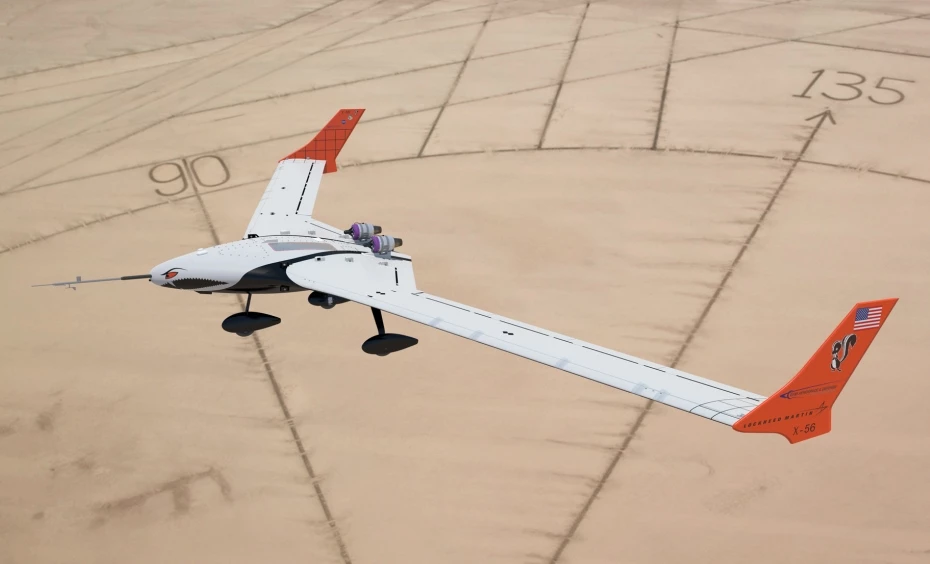According to NASA, the future of long-range aircraft lies in long, thin, flexible wings, which can develop as much lift as the relatively short, wide wings on today's airliners, but dramatically reduce weight and aerodynamic drag to bring fuel costs way down.
The relatively short, wide wings on today's airliners are actually surprisingly flexible in their own right. Every Boeing 747, for example, is tested in a rig that bends its wings upward to a full 90 degrees. But NASA's plan is to take things to a whole new extreme.
There's one big problem, though. Long, narrow, flexible wings have a tendency to suffer from flutter – a bending, twisting vibration that can easily build up to a point where it tears the airframe apart. This kind of thing is frowned upon in aviation. You can see the destructive effects of flutter in this video:
Working with Lockheed Martin's famous Skunk Works experimental aircraft department, NASA has been building and testing prototype UAVs that use active flutter control measures to detect when the vibrations are beginning, and intervene to smooth out both flutter vibrations and, potentially, air turbulence, so that passengers can enjoy a smoother ride while their aircraft is also not tearing itself apart and falling to a fiery doom.
The program has been running since 2012, with a number of flight tests already complete in the X-56A test beds. In order to test the active flutter suppression technology in an airframe that would give good representative data for a full-sized aircraft, the X-56A is a decent sized beast, weighing 480 lb (218 kg), with a 28-foot (8.5-m) wingspan and two JetCat P400 turbojets.

The first time the flexible wings were flight tested on these airframes ended in minor disaster, as one of two X-56As flown in this first test crashed soon after takeoff. Nicknamed Fido, the aircraft ran into trouble at low speed and didn't appear to have had time to deploy its ballistic parachute before plunging to Earth. This crash happened in November 2015.
Things have been going much better in more recent tests and, according to X-56A project manager Cheng Moua, "past challenges experienced during takeoffs and landings are now resolved."

Without going into too much detail, a press release credits this to improvements to the landing gear and braking system, as well as extensive vibration data analysis and upgrades to the flight controller. "We want to show that this kind of wing can be built," says Moua, "and the control technology exists to control flutter on them."
With these issues sorted out, flight testing will begin to slowly accelerate through November.
Having sat through the odd intercontinental flight and experienced severe turbulence once or twice, we're perfectly comfortable with this kind of research progressing at a painstakingly slow rate. But I think everyone can agree that once the technology is rigorously proven, it has the opportunity to deliver huge dividends in efficiency, transport costs, airline emissions and even potentially passenger comfort.
Source: NASA






